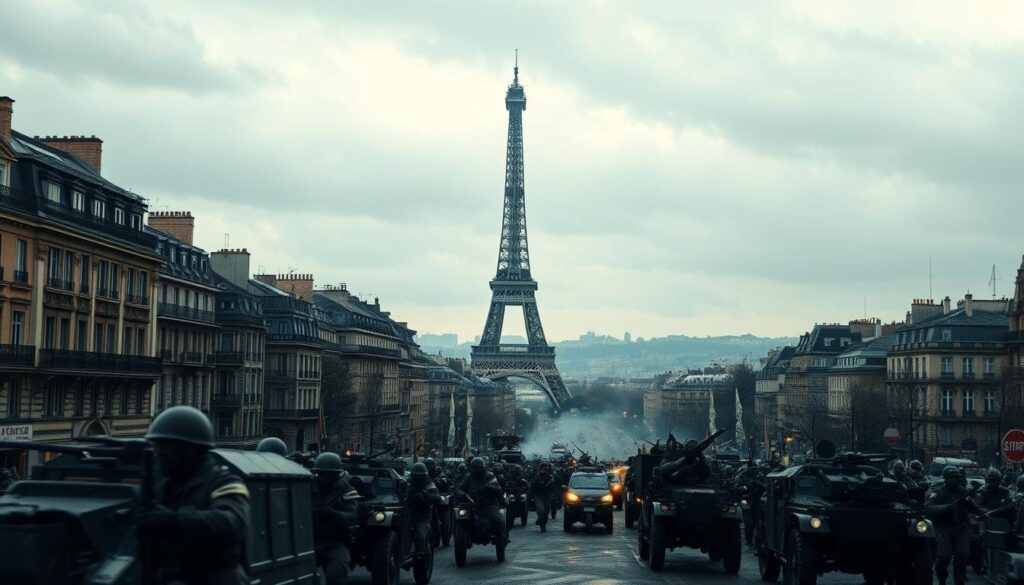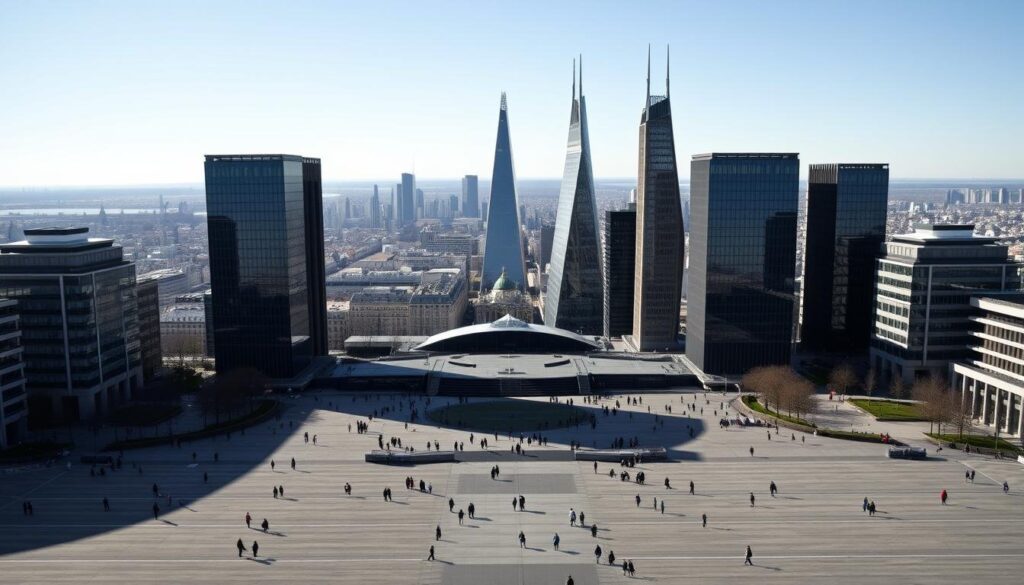Why Paris is So Hard to Defend? Defending Paris is a tough job. It’s because of its rich history, cultural importance, and strategic value. You’ll see that its special features make it hard to protect.
The city’s layout, landmarks, and modern buildings all add to the defense challenges. From a strategic view, defending Paris involves many factors. These include geography, history, and today’s issues.
It’s key to understand these complexities to get Paris’s defense. As we look closer, you’ll see what makes defending Paris so tough.
The Strategic Importance of Paris
Why is Paris so important? It’s because of its many roles in France. As the capital, Paris is the country’s political, economic, and cultural center. It also plays a big role on the world stage.
Paris is a big deal economically. It’s a major financial center and a key place for many industries. Paris is home to many big companies and is a center for business and new ideas. This makes a big difference for France’s economy.
| Aspect | Significance | Impact |
|---|---|---|
| Economic | Major financial center | Drives national economy |
| Cultural | Hub for arts and culture | Enhances France’s global cultural influence |
| Strategic | Capital city | Political and administrative center |
Paris is also very important culturally. It’s famous for its landmarks, museums, and cultural spots. Paris draws millions of visitors and is a key place for art and culture. This adds to France’s rich cultural history.
In short, Paris is key because of its economic, cultural, and political roles. Knowing these helps us see why Paris is so hard to protect.
Geographical Vulnerabilities of the Parisian Basin
When you think of Paris’s defense, you might not think of its geography. But it’s very important. The Parisian Basin has unique features that make defense hard.
The city’s flat terrain is both good and bad. It makes moving around easy but doesn’t help against invaders.
The River Seine, in Paris’s heart, affects its defense. It has been a barrier and a path for attackers. This makes defending Paris more complicated.
- The river’s width and depth change its barrier role.
- Bridges over the Seine need strong defense.
- The river also shapes city planning, creating vulnerabilities.
Knowing Paris’s geographical weaknesses is key to understanding its defense challenges. The flat terrain and the River Seine make defending the city complex.
Why Paris Is So Hard to Defend: Historical Perspective
Exploring Paris’s history shows how its defenses have been shaped over centuries. The city’s rich past has greatly influenced its defenses. Many events have played a part in how Paris protects itself.
Paris has always been a key target for invaders because of its location and importance. Over time, its defenses have changed. The Seine River and the surrounding terrain have been key in shaping these defenses.
The table below highlights key historical events and their impact on Paris’ defenses:
| Historical Event | Impact on Defenses | Defensive Strategies Employed |
|---|---|---|
| The Hundred Years’ War | Led to the development of stronger fortifications | Construction of the Wall of Philip II |
| Napoleonic Wars | Resulted in the creation of a more complex defense system | Fortification of the city with bastions and forts |
| World War I and II | Highlighted the need for modernized defenses | Development of anti-aircraft defenses and bunkers |
Looking at Paris’s defense history gives us insight into today’s challenges. The city’s defenses have evolved due to past events. To face new threats, Paris must keep adapting its defenses.
Notable Invasions and Occupations Throughout History
Paris has seen many invasions and occupations over the years. These events have greatly influenced its defense strategies. You might be surprised at how they’ve shaped the city’s buildings and military plans.
The city’s key location made it a target for many. A major invasion was during the Hundred Years’ War. The English occupied Paris from 1420 to 1436. This showed the need for strong defenses.

Paris was also occupied by Prussian forces in 1871 and by Germans in World War II. These events greatly affected the city’s defense plans. They led to new tactics and stronger structures.
The Occupation during World War II changed Paris’s defense. The focus shifted to underground and guerrilla warfare. This change was huge, moving from old fortifications to new, flexible methods.
Learning about these historical events helps us understand Paris’s defense today. The city’s past invasions and occupations still guide its defense against threats.
Modern Urban Challenges to Defending Paris
Exploring Paris today shows us defending this historic city is tough. The city’s wide area, crowded people, and complex layout pose big challenges.
The city’s narrow streets and tight buildings make it hard for defense forces to move. They also limit the use of some defense tools. You must think about how these city features affect defense plans.
Paris faces threats like cyberattacks and asymmetric warfare today. The city’s layout can be both a problem and an opportunity, depending on how it’s used.
The city’s people and buildings can help create strong defense systems. But, this needs careful planning and teamwork among defense groups.
To tackle Paris’s defense issues, a mix of old and new methods is used. This includes military defense, advanced tech, and smart city planning. These efforts aim to protect the city’s history and culture while keeping it safe.
Conclusion: Why Paris is So Hard to Defend?
Paris, a city full of history and culture, faces a tough defense challenge. Its strategic value, geographical weaknesses, and past invasions make it hard to protect. These factors make defending Paris a long-lasting challenge.
The city’s location in the Parisian Basin adds to the defense complexity. Its urban issues also play a role. To defend Paris, we need a plan that considers its history, geography, and today’s problems.
Knowing how to defend Paris is key to understanding its strength and the ongoing protection efforts. The challenge of protecting Paris shows its importance and the need for constant defense vigilance.
See Also: China’s DUV Machines: Understanding the Alarming Trend
FAQ
What are the main challenges in defending Paris?
Defending Paris is tough due to its location, history, and modern city life. It’s a complex task to keep the city safe from threats.
How does the River Seine impact the defense of Paris?
The River Seine is key in Paris’s defense. It can act as a barrier or a weak spot, depending on the threat and defense plans.
What historical events have shaped the defensive strategies of Paris?
Paris’s defense has been shaped by past invasions and occupations. Events like the Napoleonic Wars and World War II have shown the need for strong and flexible defenses.
How does the urban landscape of modern Paris affect its defense?
Modern Paris’s dense population and complex infrastructure pose challenges to its defense. It’s hard to keep the city safe while also protecting its history and culture.
Why is Paris considered strategically important?
Paris is vital because it’s France’s capital. It’s a hub for economy, culture, and identity. Keeping Paris safe is crucial for the country’s stability and security.
What are the implications of Paris’s geographical location?
Paris’s location in the Parisian Basin makes it vulnerable to some attacks. Effective defense strategies are needed to protect the city from these threats.

Hi, I’m Fernando Pham, and welcome to WhyDetails.com! I’m from San Francisco, and I love exploring questions and sharing answers through my blog.



